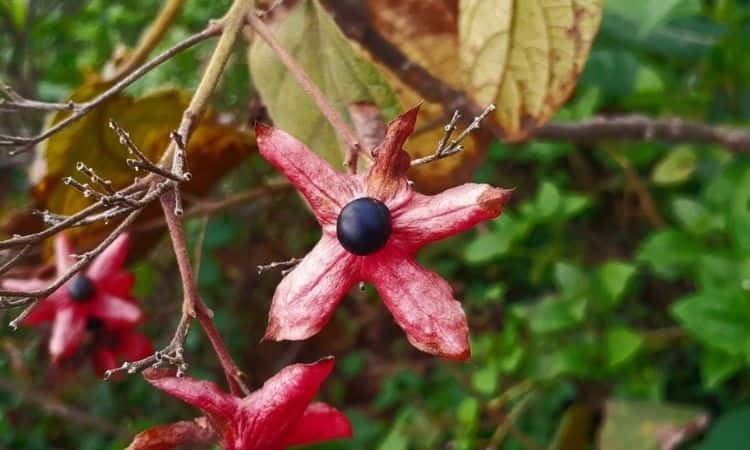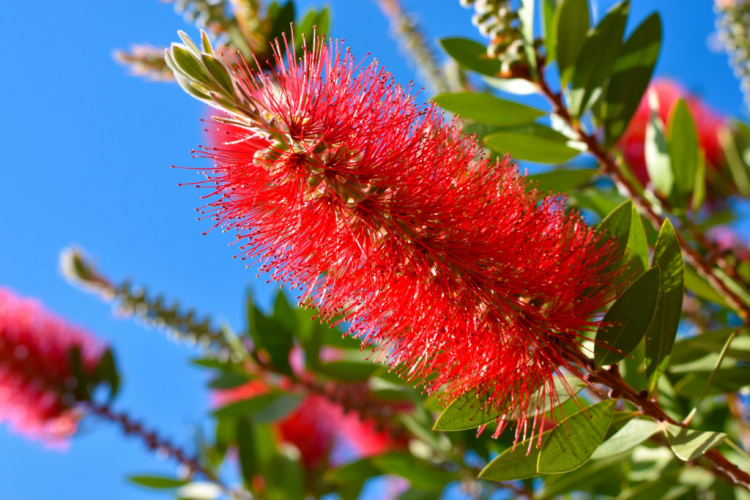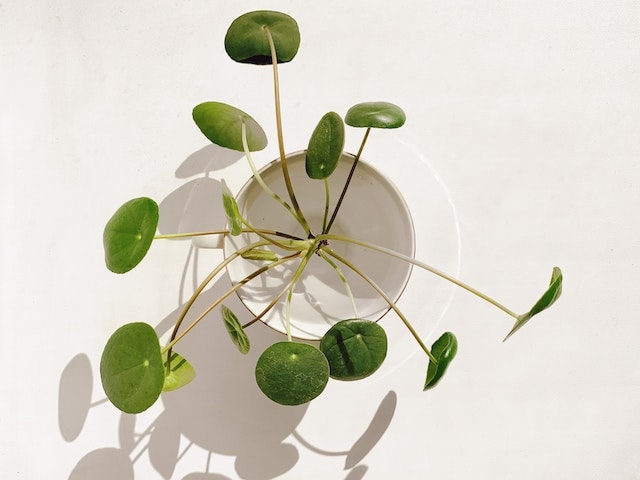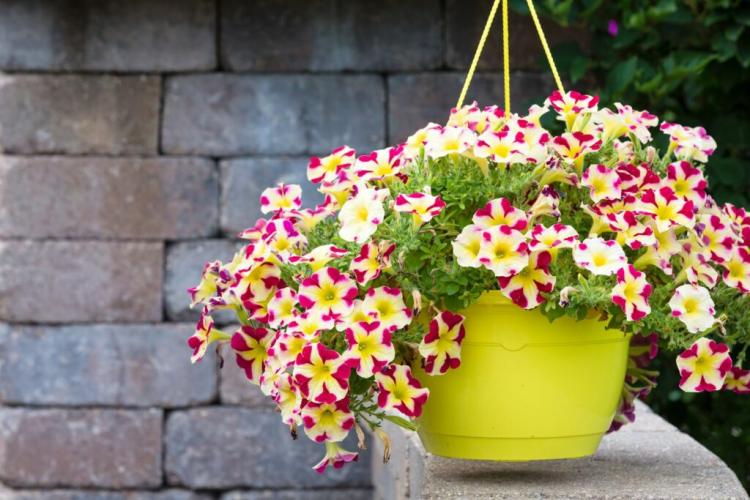Glory-Bower (Clerodendrum): Everything To Plant And Care For
The Glory-Bower, also called clerodendrum, is still relatively unknown in our country. For all those who want to be pioneers when it comes to exotic shrubs, we have summarized the most important things about planting and caring for them in the garden.
With its magnificent flowers and extraordinary fruits, the Glory-Bower (Clerodendrum) is slowly making its way into European gardens and houses. You can find out why this is justified here.
Glory-Bower: Origin And Characteristics
Table of Contents
Glory-Bower is a very inconsistent group. No wonder, because their area of distribution covers the entire tropics and subtropics of this world. There are both small trees and shrubs, which belong to the genus of the Glory-Bower, and herbaceous plants and lianas. But the lotus tree has even more to offer. While some species are deciduous, others are evergreen. However, they all belong to the family of the labiates (Lamiaceae). The flowers shine in all possible colors and usually have an extremely aromatic scent.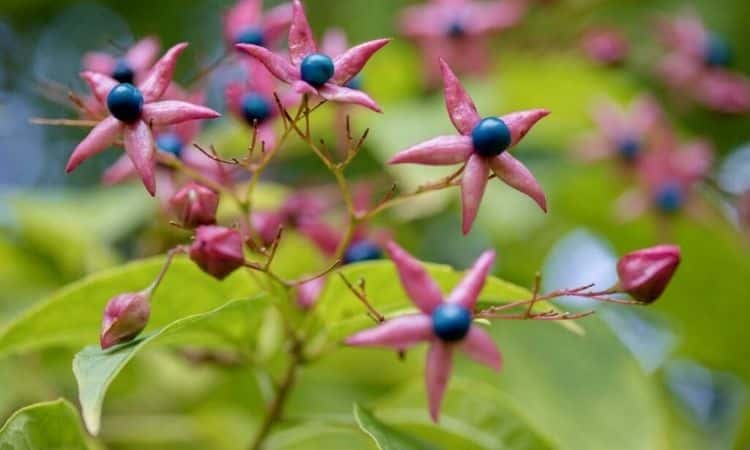
Clerodendrum Species
With the Glory-Bower species, it is one of those things. The genus seems to be incredibly species-rich and diverse, even confusing. On closer inspection, one has discovered that actually not all of these species belong to the genus of the trees. And so it is still hotly discussed which species belong to the Glory-Bower and which do not. Currently, the number of Clerodendrum species is somewhere between 150 and 300.
The best-known representatives of the Glory-Bower
- Clerodendrum trichotomum var. fargesii): The Glory-Bower is a hybrid between shrub and tree. Its shrubby growth is so compact that it grows almost like a small tree. With its maximum height of three meters, the plant is perfectly suited for small gardens and sitting areas. It is considered hardy but should be protected for the first few years. The white-blueish flowers appear only in August/September and are arranged in panicles. The red and blue fruits are a real eye-catcher.
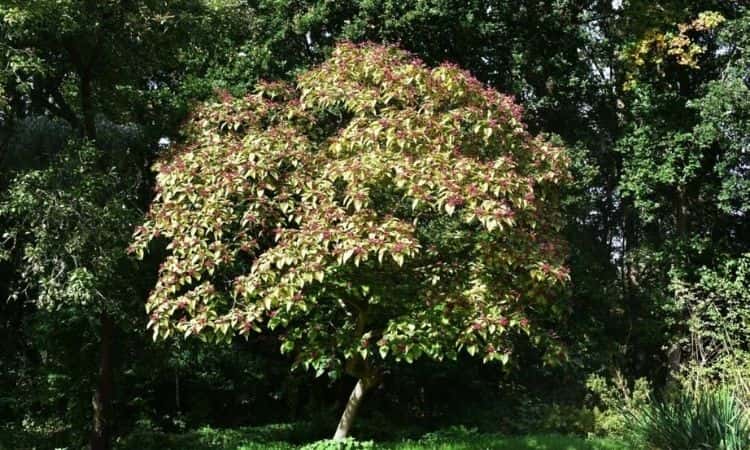
- Clerodendrum bungei: With a maximum size of two meters, the Clerodendrum chinense remains significantly smaller than the Japanese Tree and has more of a shrubby appearance. With its broad leaves and spherical pink flowers, it almost resembles a hydrangea. In a mild climate, the plant is hardy, but in cold winters it can freeze back to the ground. But be careful: Once you have found the perfect location, the Clerodendrum chinense likes to spread out over root runners.
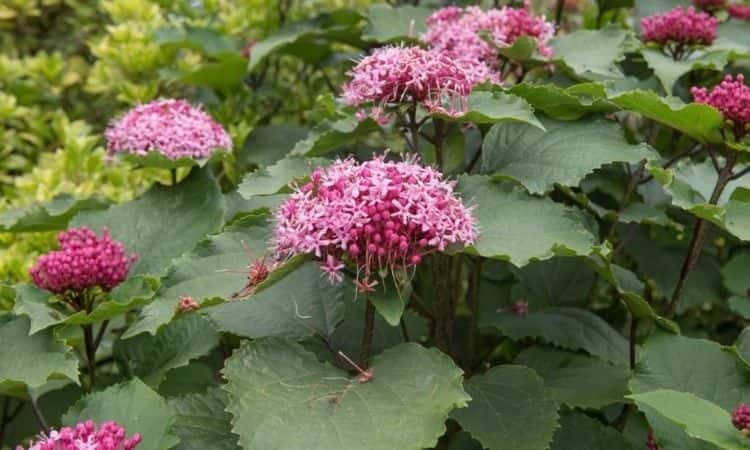
- Clerodendrum thomsoniae: If you have ever been to tropical Africa, you may have noticed a climbing plant with striking, balloon-like puffed-up white calyxes with red flowers. This liana also belongs to the tree and makes a beautiful houseplant. As a hanging basket or on a trellis its flowers form an exciting contrast. Although the tree theoretically grows several meters tall, its growth can be limited to about one meter. This species is not hardy.

- Clerodendrum ugandense: The Uganda Bush surprises with its beautiful blue flowers. As a high-stemmed shrub or a shrub in a tub, it makes a wonderful addition to the garden or terrace. This type of keeping is favored by its good tolerance for cutting. Its leaves are evergreen, which is why it should be wintered frost-free.
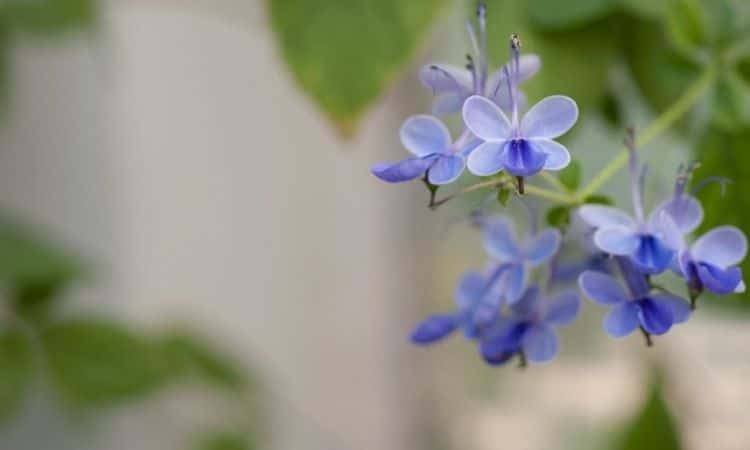
Planting A Glory-Bower: Time, Location And Procedure
As tropical plants, Glory-Bower loves the sun, but they do not cope well with the blazing summer sun. In their homeland, they grow mainly at the edge of the forest and in thickets. It is, therefore, better to plant your tree in the shelter of other shrubs or a place protected from the direct midday sun.
In the house held Glory-Bower also rather half-shady places in the apartment. In general, they like a warm location, preferably with high humidity. The following points are therefore important:
- Protection from direct sun.
- Warm.
- High air humidity.
The best time for planting is in spring. Dig a large hole for this. It should be wider and deeper than the root ball itself. Now put some of the soil back into the hole and place the root ball at ground level. Now you can fill up the rest with the excavated soil. This will make it easier for your Glory-Bower to penetrate the soil with its roots.
Now press the soil lightly again so that the shrub stands securely and water it carefully. For the first time after planting, you should continue watering more frequently until the tree has sufficiently developed its roots.
Repotting A Glory-Bower
The plant is rather less demanding in terms of a substrate. They thrive on all well-tended, permeable garden soils with a weak alkaline pH value. The Japanese and Clerodendrum chinense can therefore be placed in the garden without much preparation. The same is usually true for potted trees, but since you have the choice here, you should opt for humus garden soil.
Clerodendrum Care
With good care, Clerodendrum can become quite old. For example, the Japanese Tree grows into a beautiful tree within many decades. Also, the plant can be propagated by cuttings without any problems. Their genetics are therefore in principle immortal. To ensure that your lotus tree will also reach a high age, we have collected the most important information for you here.
Watering and fertilizing Clerodendrum
During the summer you should orientate yourself towards the home of the lotus trees when watering. There it is quite humid. Therefore, water regularly and also penetratingly so that the soil always remains moist. However, you should avoid waterlogging at all costs, as this can lead to root rot. In winter, Glory-Bower is kept somewhat drier. Deciduous species, in particular, need much less water.
Fertilization is also stopped during the winter, around September. In spring, however, just planted out specimens love a dose of fresh compost. When using fertilizers, you should make sure that there is a sufficient amount of phosphorus, as this promotes flower formation.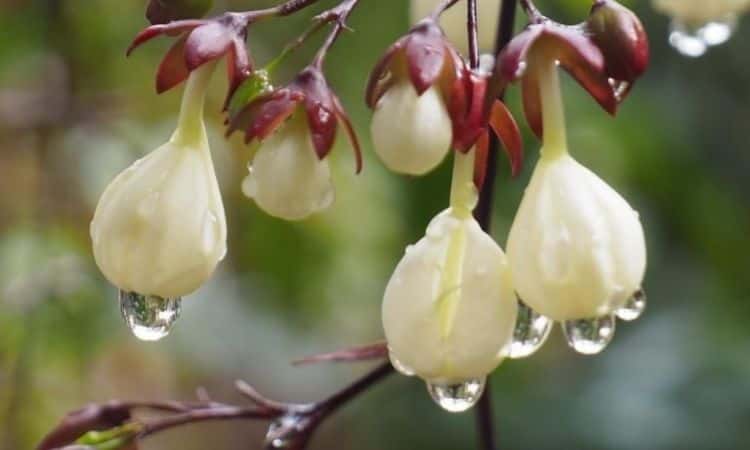
The most important points for watering and fertilizing are therefore these:
- Always keep it moist during the summer.
- In winter a little less water.
- Spray indoor plants regularly with lime-free water.
- Fertilizing only during the warm season.
- Prefer organic fertilizers.
- Phosphorus in the fertilizer promotes flower formation.
Cut Glory-Bower
The hardy Glory-Bower usually does not need pruning, as they remain quite compact. If you still want to swing the pruning shears, early spring is the right time to do so before new shoots appear. Glory-Bower kept in pots or tubs are more likely to need pruning.
The tree, for example, can easily be pruned a little during the summer months. More radical pruning is also possible but should be done in early spring.
Clerodendrum hibernates
Depending on the species, older trees can be hardy. The Clerodendrum chinense is therefore also frequently planted out in Europe. It only needs light winter protection for the first two to three years. Here it is helpful to protect the roots from fallen leaves or brushwood and to wrap the trunk with fleece or bubble wrap in extreme cold.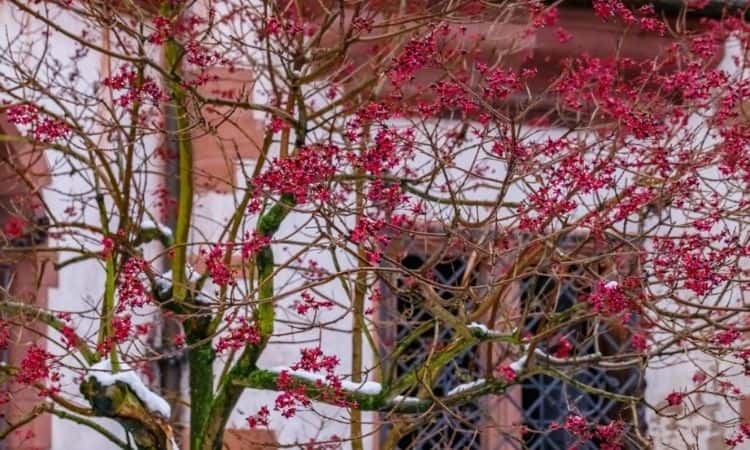
Many species, such as the Clerodendrum chinense or the Uganda Bush, have certain winter hardiness and can be planted out in mild regions of the USA. Protecting the root with leaves or brushwood can be helpful in extreme locations. The plants usually freeze completely over the winter above ground. While the Clerodendrum chinense tolerates this well, the Clerodendrum ugandense should be wintered frost-free to be on the safe side.
Non-hardy species like the tree must be wintered frost-free. A bright place with temperatures between 10 and 15°C is optimal. However, Clerodendrum can also be wintered in a warm place. It applies in summary:
- Clerodendrum thomsoniae only needs winter protection during the first 2 – 3 years.
- Clerodendrum chinense freezes above ground.
- Clerodendrum ugandense winter in a bright place at 10 – 15°C.
Is The Glory-Bower Plant Poisonous?
The fruits of the Glory-Bower are slightly poisonous. However, you do not need to worry, because the fruits are anything but tasty. So don’t even think about trying more than one bite of it. So you can integrate the plant into your garden or home with a clear conscience.
